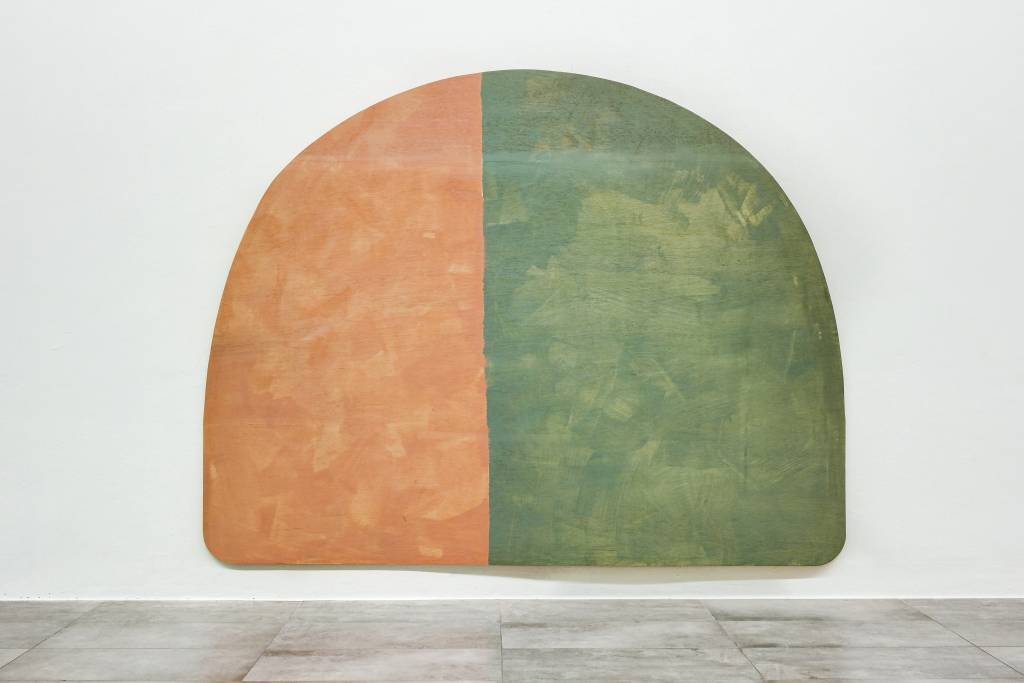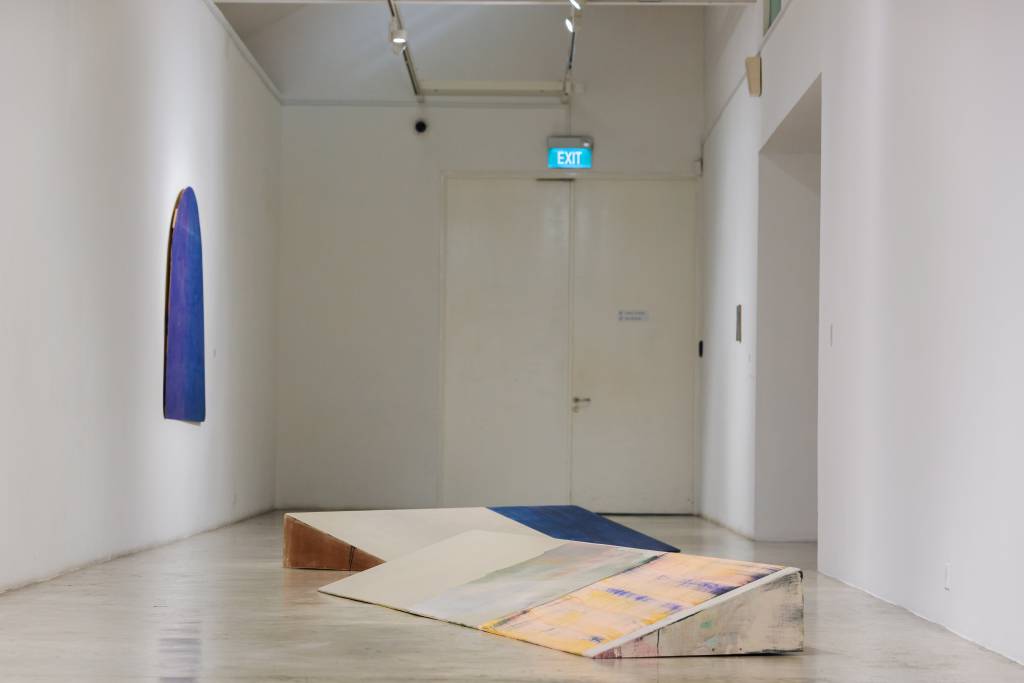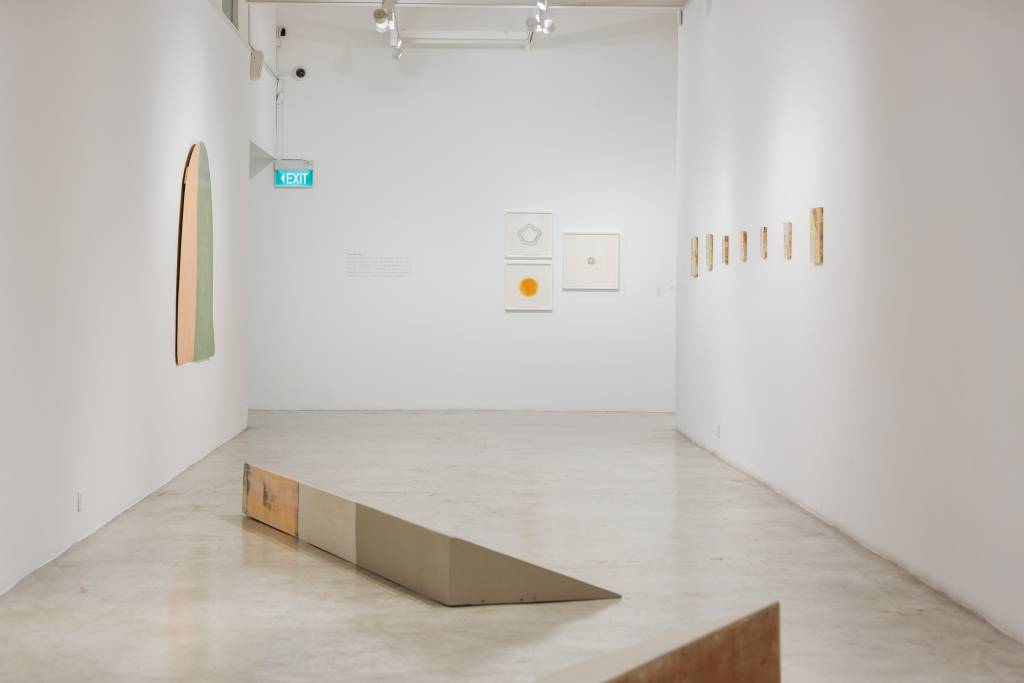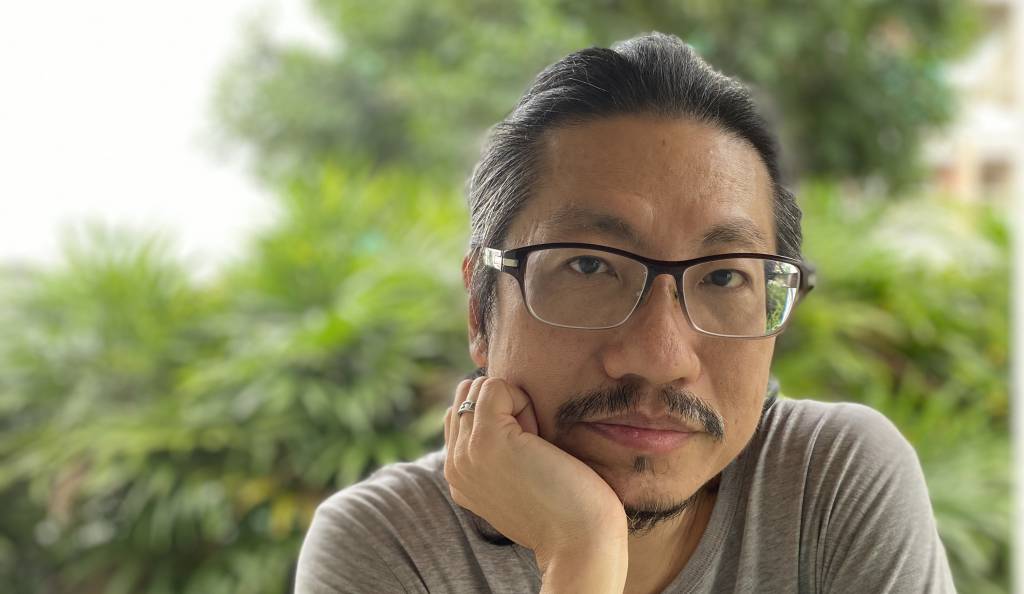GL: I remember being at an exhibition opening with you some years back when a curator asked (quite innocently) if you would be interested to make some sculptures for the Singapore Biennale. At that time, the request felt rather ill-conceived, seeing that you were known primarily as a painter. Yet, here we are in your studio looking at these ‘painterly objects’. How did this body of work come about and what made you decide to move into three-dimensional forms after all these years?

Emotional Things (2018–20), acrylic on plywood, 150 x 195 cm. Photo courtesy of STPI.
IW: It came about when the programmer Jezlyn Tan from the Esplanade asked me to propose a work for their tunnel-route that connects the train station to the theatre. I remember noticing and being initially influenced by the angled pillars that divided the length of the wall and the greenish tinge that enveloped the space. It was a 70-metres-long public space, so I had in mind a juxtaposition of painted objects that you could observe from any angle while you were passing through the tunnel, hence the slanted edges. I also wanted to have the body move and experience the colours gather and collide as you walked or ran, whether to catch a theatre programme or the train. The slanted angles of these objects were inspired by a row of open windows I saw at an abandoned factory at Paya Lebar. Each of the windows had a different tilt and this created an amazing rhythmic quality and sight. I was also thinking a lot about tilting the surface of an image, referencing Malevich’s iconic installation of black paintings on a wall in a corner, where the paintings dipped downwards like Salon portraits hung above eye level. Finally, all decisions about the scale of each object was based on the length of the tunnel, where the longest objects accentuated the feeling of longitude and duration. I wanted them to look like short table counters so you could rest your hand or put something on top of the objects. I actually did not think of them as three-dimensional but, rather, exaggerated reliefs that I could paint on.
GL: I’m intrigued by the title Emotional Things. Many things come to mind when I look at your paintings but you’ve never struck me as an ‘emotional’ kind of painter. In fact, I always saw your mark-making process as being quite considered rather than emotional. Are you being ironic?

Select installation view of Emotional Things. Photo courtesy of STPI.
IW: I felt it was a risky title but I liked that it sounded like bad English. Well, isn’t ‘being considered’ an attempt to control one’s emotion? Perhaps one can see each object as a ‘considered’ vessel containing ‘emotional’ gestures of colour. I was drawn to the play of the two contradictory words which had a poetic stance to it. How can things have emotion? I think human beings give objects ‘emotion’ through time, like used furniture in a house. I don’t think the object needs to look distressed, but one can sense when something has been put to use. Or perhaps, a particular arrangement of things can have that effect, like a still life.
GL: We selected a few pieces from their original setup and reconfigured them for this exhibition. You are quite comfortable with switching things around and creating new situations with these objects – they function almost like props for improvisations. How is this way of working similar or different to your usual painting process?

Select installation view of Emotional Things. Photo courtesy of STPI.
IW: I like the objects to express the feeling that they can be transformed in different environments. I tend to paint in colour fields for these objects and with less patterns on them as compared to painting pictures. I also like the idea of colour seen as a spectrum, always ready to change and merge. In this way, it is similar to how I make my paintings where I would layer the colours and see how they respond to each other in the studio. To me, layering is the history of the mind thinking about colours changing in time. Painting is about tampering with virtual spaces. My objects are like the ‘gestures’ in my pictures, but the difference is that they are waiting to take part in a real, ‘onsite’ space-time situation. They are characters in a play, waiting to be summoned. But what I like most is when the objects dictate how they want to occupy a particular environment.
GL: I’m thinking of the series of exhibitions Impermanent Durations that you had with David Thomas and Beth Harland between 2016-19. From what I understand, these exhibitions took place in three different gallery spaces and were largely set up on the spot in-situ. Did these conditions require a different sort of improvisation?
IW: Impermanent Durations was an ‘education’. I had to be on my toes as the critical aspect of putting one work next to another was always a considered form between restraint and minute adjustment. It was about surprising the senses. There was a lot of planning but the phenomenology of looking became the end-all of any decision. That was the task. And we did disagree, but working with Thomas, Harland and Lisbon was like playing music in a band where each of us understood the same kind of music and instrumentation we had to be responsible for. The key to the success of the project was how we utilised space and height in a given space. I also became good at packing paintings in suitcases!
GL: In our conversations, you often mention ‘doubt’ as an important quality that you value as an artist. Why is that? Do you think there is an inherent relationship between doubt and the space of improvisation and abstraction that draws you to this way of making?
IW: Not being sure is an important element in improvisation and one needs to react immediately when the process begins. I am an abstract painter and it’s an important statement in relation to doubt because I am dealing with constructing shape and colour through the intuitive passing of time. Moment after moment during the process of painting, I am making minute decisions with shape and colour depending on the experience of my mind, body and cognition. But the painting knows better than me, it surprises me with my best laid intentions. I may think of applying a large gestural mark, but when it happens, it may not look like what I had intended, but it can challenge me to discover another direction that is even more interesting. Like a game, every painting lays out a set of problems that needs solutions.
Doubt is part of life. One cannot do it on purpose, it begins with nervous energy. So many things cross my mind when making a painting – I will do this; it is already doing that; I will not look at it for a while; I will return to it in a few days; I want to forget about it. But it always gets better and clearer through me staying with it, listening to it, which is why I am in it for the long haul. I am committed.
Click here to return to Strange Forms of Life: Resource Centre
